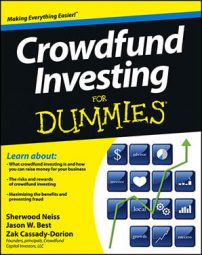A patent is a type of property right; it’s a document granting an inventor sole rights to an invention. It gives the holder the right, for a limited time, to exclude others from making, using, offering to sell, selling, or importing the subject matter that is within the scope of protection granted by the patent.
In the United States, the U.S. Patent & Trademark Office (USPTO) determines whether a patent should be granted in a particular case. However, the patent holder must enforce his or her own rights if and when the USPTO grants a patent.
Securing a patent in the United States can cost as little as $5,000, or it can cost well over $20,000; the cost differences depend upon the type of patent (a process patent may be more expensive than a design patent, for example) and the degree of complexity involved.
The time required for a patent to be granted depends on the registration procedure and other factors that vary from country to country. In some countries, no examination as to the substance of the patent application is conducted, and the procedure generally lasts just a few months.
In countries such as the United States, where the patent office conducts a thorough, substantial examination to check whether the patent meets the patentability criteria of “novelty, inventive step and industrial applicability,” (per the USPTO website), the entire procedure from application to grant can take well over three years.
You can apply for three types of patents:
Design patent: Think of the famous Burberry design. According to the USPTO website, “A design consists of the visual, ornamental characteristics embodied in, or applied to, an article of manufacture. . . . A design for surface ornamentation is inseparable from the article to which it is applied and cannot exist alone.” Design patents last 14 years.
Plant patent: Think of Green Seedless Table Grapes. In very simple terms, a plant patent is useful for someone who has invented or discovered and reproduced (without fusing male and female cells together) a distinct and new variety of plant. Can you say, genetically engineered? Plant patents last 20 years.
Utility patent: Think of a mechanical valve heart. A utility patent protects the way an invention is used and works. The word utility means that something has a purpose or a useful function. Utility patents are subdivided into mechanical, electrical, and chemical categories.
In general, utility patents may be granted to anyone who invents a new and useful method, process, machine, device, manufactured item, or chemical compound — or any new and useful improvement to these same things. Utility patents last 20 years.
Two types of utility and plant patent applications exist in the United States:
Provisional: An initial, temporary filing that grants you short-term rights. A provisional application is a quick and inexpensive way for an inventor to establish a U.S. filing date for an invention. A provisional application is automatically abandoned 12 months after its filing date and is not examined. An applicant who decides initially to file a provisional application must, within the12-month period, file a corresponding nonprovisional application.
Filing a provisional application does not guarantee you a patent. It does, however, give you at least 12 months to decide whether to go for a nonprovisional patent and to seek crowdfund investment capital for your idea. You can file this application online for as little as $199 plus government fees.
Nonprovisional: A full patent filing with long-term protection. A nonprovisional application is examined by a patent examiner and may be issued as a patent if all the requirements for patentability are met. Each year, the USPTO receives approximately 500,000 patent applications. Most of them are nonprovisional applications for utility patents.
In an effort to help people protect their intellectual property without having to wait three years for an answer, the USTPO has developed a new patent registration process called prioritized examination. Prioritized examination covers utility and plant patent applications. The goal is to provide a final answer within 12 months. A maximum of 10,000 requests for prioritized examination are granted each year.
If you seek one or more patents, let your investors know their status, including in which countries you have them. Investors want to know that the money they put into your business won’t be wasted because you failed to protect your assets.

